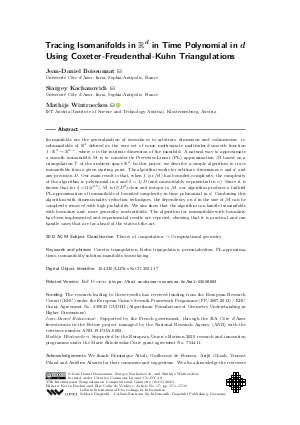LIPIcs.SoCG.2021.17.pdf
- Filesize: 1.88 MB
- 16 pages

 Creative Commons Attribution 4.0 International license
Creative Commons Attribution 4.0 International license






Feedback for Dagstuhl Publishing